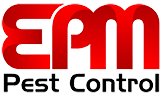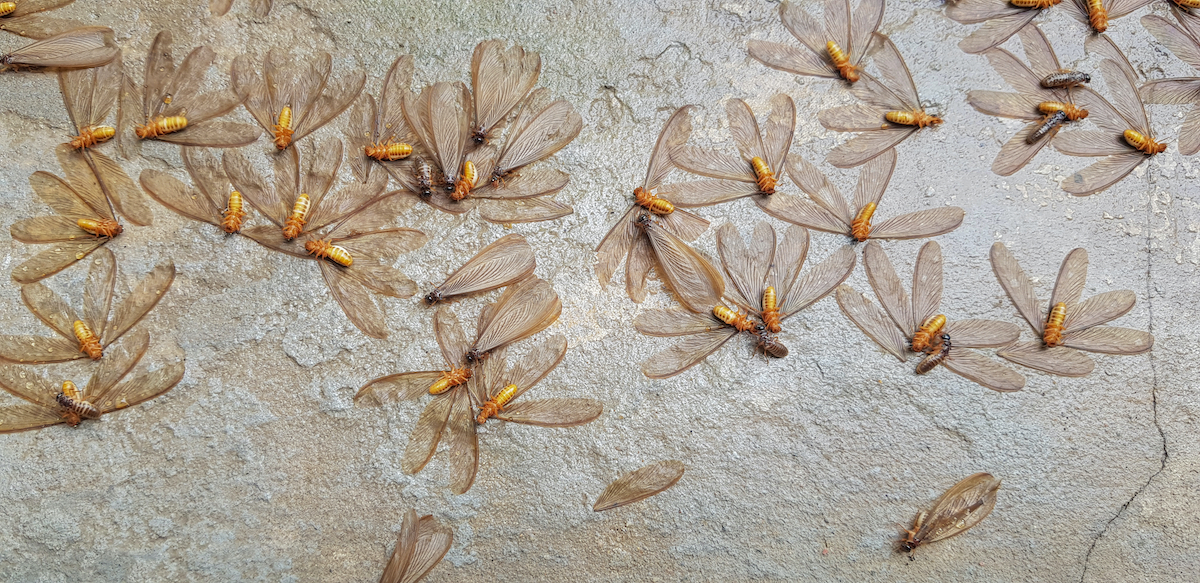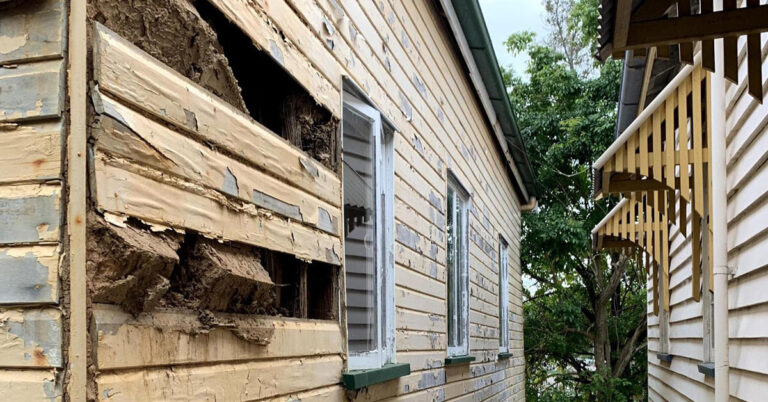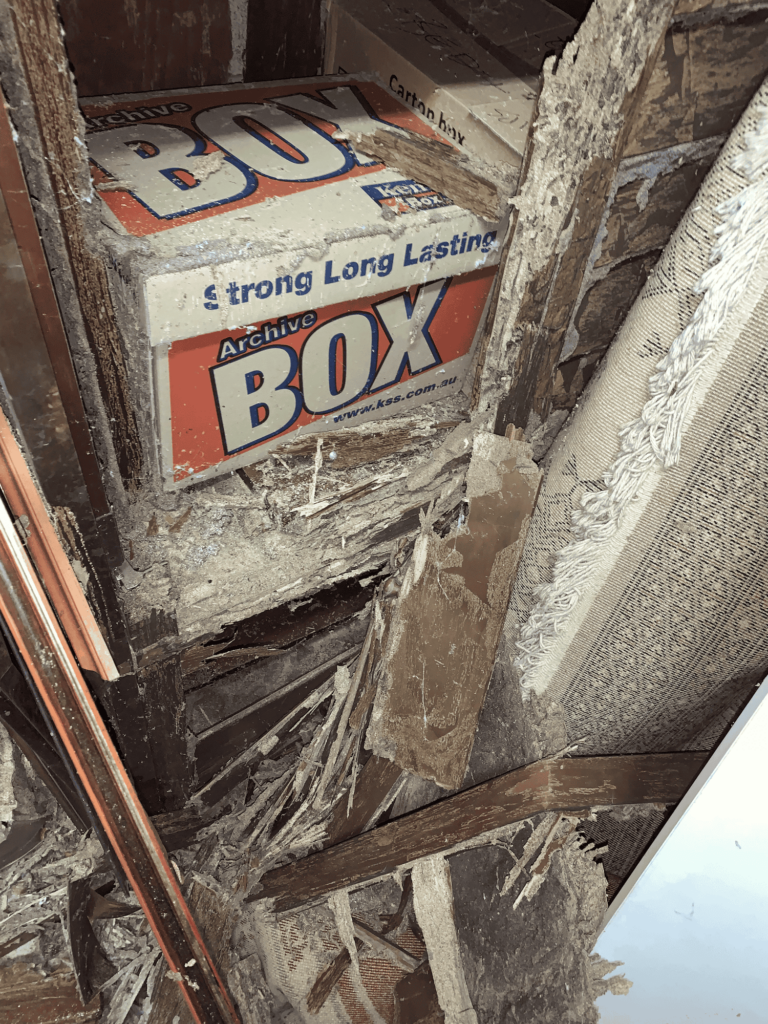Methods on How to Get Rid of Flying Termites and Tips to Kill Flying Termites
What are Flying Termites?
Flying termites, also known as swarm, are a particular stage in the life cycle of these insects. Unlike the common termite that we have seen, flying termites have wings. They’re alates, future kings, and queens of a new termite colony. However, identifying these flying termites isn’t always easy for an untrained eye, as they can easily be mistaken for flying ants. Understanding these unique termite species has a critical role in ensuring that your pest control efforts are effective.
Flying termites have a simple agenda: mate, find new fertile grounds, and start a new colony. When these termites swarm, it’s a clear indication that a termite colony is nearby, which poses a significant risk to your property. If you spot these flying insects, it’s crucial to act swiftly and seek professional extermination services like those offered by EPM Pest & Termite Control. Our experts can quickly identify the type of termite and apply the appropriate treatments to protect your home from these pests.
Identifying the Winged Termite and Understanding the Potential Risks of Flying Termites
It’s important to accurately identify a winged termite as it can be easily mistaken for other insects. Generally, winged termites have straight antennae and a thick waist. Their wings are also a unique feature as all four of this termite’s wings are equal in size and shape. Flying termites, or swarmers as they’re often called, pose a potential risk to your home. The primary objective of these flying pests is to start a new colony. Therefore, upon spotting a single winged termite, one could be facing an imminent termite infestation.
Experiencing a termite flight in or around your home isn’t something to take lightly. Though many imagine termites merely as ground-dwelling pests, flying termites are a real threat. These ambitious winged termites fly in search of new locations to establish their colonies. Their penchant for wood means they can cause substantial damage to the structures of homes and buildings. EPM Pest & Termite Control offers comprehensive solutions to eliminate these flying invaders and protect your property from further harm.
How to Get Rid of Flying Termites in and Around Your Home
As a homeowner, finding a way to get rid of flying termites becomes a priority once you discover they’ve made your home their haven. The secret to how to get rid of these flying pests involves understanding their habits and creating a foolproof plan for getting rid of them. It’s crucial to get rid of flying termites as soon as they appear, as they often hint at larger termite infestations. You might need to repeatedly get rid of them to completely eliminate the colony. The most effective measure is to kill flying termites at the source, their colony. This will require you to kill them at their nests. Even if they’re flying off, it’s imperative to kill them or they’ll return. While flying, they leave their nests to establish other colonies, causing major destruction. The way to success is to keep killing flying termites until no signs remain. When they fly away from their colony, take this as a chance to destroy it. It’s important to ensure your home isn’t the next site for these termites to make their colony. Keeping your home clean and dry will make it less appealing for them to stay. Remember, the goal is to make your home flying termite-free.
Drywood Termite: Methods on How to Get Rid of This Common Flying Termite
Drywood termites, a prevalent type of flying termite, can be a significant nuisance to homeowners. Thankfully, there are various methods on how to get rid of these insects. Initially, identifying the species by observing the termite swarms can help pinpoint the right control methodology. Swarms signify the termites are reproducing; hence, whenever you encounter a swarm of these termites, you’ll know it’s high time to act.
Primarily, drywood termites are attracted to wood, so keeping potential wood sources away from your home’s foundation can help get rid of the insects. If you notice an infestation, treatment solutions such as insecticides can be applied to the affected areas. Hiring EPM Pest & Termite Control, experts in termite extermination, could significantly help you get rid of them effectively, making sure every termite is eliminated, they can fly or crawl.
Avoidative actions, such as sealing small crevices and cracks in your home, can deter drywood termites. To get rid of these pests, remember that it’s an ongoing task that requires constant vigilance and possibly professional intervention.
How to Prevent Future Flying Termites Infestation
It’s essential to understand that flying termites commonly start from a termite colony. When you have termite colonies in close proximity to your home, the risk of infestation exists. Flying termites are a clear sign of a concerning issue — a thriving termite colony. The objective is to not let the termite colonize your home. Maintaining your home’s health involves preventing these flying pests from making it their breeding ground.
To prevent future flying termite invasions, consider professional pest control interventions. Hiring experienced companies like EPM Pest & Termite Control can help effectively eliminate these pests. They’ll thoroughly inspect your home for termite colonies, applying excellent strategies to clear these out. To ensure the termites don’t return, regular check-ups are needed from here on out. This proactive action is a smart step to prevent further infestations.
Next, swiftly address water damages, as termites are attracted to dampened wood. Also, remember not to let dead tree stumps or unused wooden materials lay around. These potentially welcome termites. Ensuring proper ventilation can reduce chances of damp wood, lowering the propensity for termites to fly into your home. If these steps are taken into consideration, you can confidently say: termites, be gone!
Crucial Steps to Take to Deter Termites
Getting rid of termites involves some strategic methods you must take. The first step you should take is to treat any infected wood with a termite-killing product—this action effectively dealing with termites in no time. Aside from this, you should also get rid of excess moisture in your house and seal all wood surfaces to deter these pesky critters. For effective termite control, you need to ensure you inspect your space routinely. Timely detection plays an essential role in how quickly you can get a termite situation under control. Furthermore, the presence of termites in your home doesn’t necessarily imply an infestation. Nevertheless, you must take immediate steps to kill these insects and prevent a potential epidemic. At EPM Pest & Termite Control, we’ve seen instances where a homeowner didn’t take termite presence seriously—these homes ended up being heavily infested. Dealing with a termite infestation can be challenging. It requires strategic planning and, in most cases, professional help to completely get rid of termites. But by taking these steps, you’ll put yourself in a better position to keep your home termite-free.
Pest Control Services
At EPM Pest & Termite Control, we specialize in providing professional and effective pest control services. Our main aim is to assist customers in dealing with any pesky pest problem. We’re highly skilled in various pest control methods, including insect control, ant control, cockroach control, and mosquito control. Our services are designed to tackle all types of pests, from ants and cockroaches to mosquitoes. We deploy different control methods to ensure your home is free from these harmful pests. Whether it’s navigating through ant colonies or battling a stubborn cockroach infestation, we’ve got it covered. Our knowledgeable team understands the behavior and life cycles of these pests, enabling us to provide targeted pest control solutions. Aside from home-based pests, we also offer comprehensive pest control services for businesses. Our thorough approach ensures that all identified pests are entirely exterminated, with measures put in place to prevent future infestations. With EPM Pest & Termite Control, you can rest assured that your pest issues are efficiently dealt with. Trust us, the pest control pros, to restore your peace of mind.
How to Get Rid of Flying Termites With Professional Help
Considering how to get rid of those pesky flying termites? Then you can’t ignore professional help. Here at EPM Pest & Termite Control, we know just how to tackle this complex issue. Offering exceptional services to rid your home of flying termites, we’ve got you covered exactly when you need to get rid. Our company specializes in managing termite infestations, including the bothersome flying termite. Termites, whether flying or not, can cause significant damage to your home.
Experts in termite control, we’ll fly to your rescue to protect your home. Our experienced technicians utilize tried-and-true methods to eliminate termites and prevent recurrent infestations. Why try to handle it alone when you can enlist our help? Trust us, it’s not just about getting rid of the flying termite that you see, it’s about ensuring they don’t keep coming back.
Beware of those flying termites. They don’t just fly around your home, they infiltrate and wreak havoc. With EPM Pest & Termite Control, your home stays protected. We ensure to get the job done swiftly so that you can peacefully enjoy your home without the fear of termites. Call us to get peace of mind today.
Termite Inspection
In the process of dealing with flying termites, termite inspection plays a significant role. To identify termites and find the source of infestation, a thorough termite inspection is essential. Here at EPM Pest & Termite Control, we specialize in termite control services, including comprehensive termite inspections to address the root of the problem. Our experts know just what to look for to find termite infestations in your property. Termites may be small, but they can cause significant damage to your property if not dealt with swiftly and effectively. As part of our termite inspection Brisbane process, we not only find the termites but also determine the extent of the termite infestation. This enables us to customize an effective treatment approach to combat both the current termite problem and prevent future termite infestations. Regular termite inspections can prevent costly damages and protect your property from the devastating effects of termite infestations. Remember, it’s always better to be proactive when it comes to termites. Engaging in routine termite inspections can save you a lot of stress and money in the long run.
Termite Treatment: Steps to Take After a Termite Inspection
Discovering the presence of flying termites in your property can distressing but with the right termite treatment, it’s possible to eradicate every last one of them. After the crucial termite inspection, you’ll need to take further steps. First off, it’s highly important to react quickly following a termite inspection. Termites can multiply at a rapid rate, the longer you allow them to settle, the hard it will be to get rid of them.
An effective termite treatment can include chemical treatments, baits, or physical barriers depending on the extent of the infestation. It’s highly recommended to reevaluate the conditions on your property making it less appealing to termites. Termites thrive in moist environments, therefore eliminating any sources of moisture can greatly aide in keeping termites at bay.
Entrusting this all to EPM Pest & Termite Control will make the termite treatment effective and efficient. With multiple inspection and treatment cycles, your home could be termite-free sooner than you thought possible. Hence, it is important to take quick action and utilize professional services for your termite treatment needs.
About Termites Have and Their Environment
For those who’ve experienced them firsthand, termites can be quite the nuisance. But what conditions do these termites have to thrive? Well, termites, like any other insect, have specific environmental needs. They thrive in moist, dark environments where they have a regular food source – typically cellulose-based material. Termites have a complex social structure within their colonies, similar to ants. These colonies can include various types of termites such as workers, soldiers and reproductives known as swarmers or flying termites.
Speaking of flying termites, these are mature, reproductive termites, and they initiate new colonies. A humid environment tends to be a hotspot for these termites. As a homeowner, it’s essential to understand what conditions termites have to live and reproduce so you can take preventive steps. Remember, prevention is always better than cure, especially when dealing with termites.
Each type of termite has specific environmental needs, for instance, Drywood termites have different needs compared to Subterranean termites. Understanding their habitat, food sources, and environmental needs will make pest control a lot more successful.
Effective pest control with EPM Pest & Termite Control can rid you of these pesky creatures and provide advice on strategies to deter termites from your property in the future. Reach out to us today for a comprehensive termite inspection and treatment plan. Let’s create a termite-free environment for your home!
Understanding Why Termites Have Wings and Fly
What do we understand when we say termites have wings and fly? It’s a critical aspect to decipher as it helps in comprehensive termite control. Normally, termites have wings solely to reproduce and expand their colonies. Due to certain environmental triggers, these termites sprout wings and take flight, establishing new colonies. During the flying phase, termites are commonly mistaken for flying ants. However, a closer look reveals differences, primarily that flying termites have a straight antennae, a thick waist, and wings of equal size.
Several factors come into play to understand why termites have wings and fly. Mainly, it’s about reproduction, colony expansion, and survival. It becomes crucial to control flying termites before they cause severe infestation. When termites fly, they shed their wings, which could be an indication of infestation. For effective termite control, it’s highly recommended to reach out to professionals. EPM Pest & Termite Control offers dependable methods to eradicate not only the flying termites but all types of termite hazard. We also suggest preventive measures to ensure your space remains termite-free. Consult us today to discuss your termite control needs.
Conclusion
In conclusion, this article aims to provide comprehensive information on swarmers, commonly known as flying termites, and their impact on wood structures. Flying termites play a critical role in the lifecycle of a termite colony, with swarmers leaving the colony to form new ones, thereby extending the scope of damage.
Controlling an infestation involves identifying the source and extent of damage, which can be extensive in wood structures due to their preference for this material. Timely detection and action can reduce the quantum of damage and prevent the infestation from turning into a full-scale swarm.
While DIY methods can help limit a smaller infestation, professional help from reputable companies like EPM Pest & Termite Control is often required for a larger or more stubborn colony. Furthermore, recurrent swarms are indicative of an active termite colony in or around your property, necessitating repeated interventions. As this article has shown, prevention is always better than cure when it comes to flying termites.
With a pest control strategy in place and a careful eye on potential risk areas, you can minimize the risks of a termite infestation damaging your property. Some animals eat termites.
Final Thoughts: Winning the Battle Against Flying Termites
When it boils down to controlling a termite infestation, especially a flying termite outbreak, you’ve got to take measured steps. The focus should not just be on dealing with the present problem, but the future as well, ensuring your home doesn’t fall prey any longer. Getting rid of termites necessitates keen understanding, so let’s break it down. First, identify what you’re dealing with, familiarise yourself with what flying termites are, and the potential risk they pose.
After identification, figure out effective methods to get rid of flying termites in your home and dealing specifically with the common drywood termite infestation. Prevention is as crucial, if not more so than eradication, so take certain preventive steps to keep your home termite-free. Seek the help of pest control services if needed. EPM Pest & Termite Control’s extensive experience in termite control can assure you that no corner of your home would be left unchecked in our comprehensive inspections, and tailor-fit treatment plans based on these inspections ensure no termite would survive.
Lastly, equip yourself with knowledge about termites and their environment, like why termites fly. Remember, if there’s a flying termite in your home, there’s likely a colony nearby. Winning the battle against flying termites isn’t a short-term effort; it’s continuous and demands diligence. We at EPM Pest & Termite Control are with you every step in this journey to protect your home.
Frequently Asked Questions
Q: What are flying termites or swarmers?
A: Flying termites, also known as swarmers, are a specific stage in a termite’s life cycle. They are future kings and queens of new termite colonies. They have wings, a unique feature that distinguishes them from common termites. Their agenda is to mate, find new fertile grounds, and start a new colony.
Q: How do I identify a flying termite?
A: It’s essential to accurately identify a winged termite. They have straight antennae, a thick waist, and their wings are all equal in length and shape. If you are unsure, it’s advisable to seek professional help from companies like EPM Pest & Termite Control to correctly identify the species and apply appropriate treatments.
Q: Are flying termites a threat to my home?
A: Yes, flying termites pose a potential threat to your home. These termites search for new locations to establish their colonies. They not only cause significant damage to homes and buildings but also their swarming indicates that a termite colony is nearby.
Q: How can I get rid of flying termites?
A: Ensuring your home is clean, dry and eliminating unnecessary wood sources can make your property less appealing for these pests. Use of treatments like insecticides and sealing small crevices can help. However, as getting rid of these pests needs ongoing efforts, professional intervention from expert exterminators like EPM Pest & Termite Control could be effective.
Q: How can I prevent future termite invasions?
A: To prevent future termite invasions, consider addressing water damages promptly as termites are attracted to damp wood. Do not let dead tree stumps or unused wooden materials lay around. Regular check-ups from professional pest control companies like EPM Pest & Termite Control can help to keep these pests at bay.
Q: How can pests like flying termites be treated effectively?
A: After carrying out a thorough termite inspection, experts from EPM Pest & Termite Control team can devise a customized treatment plan. Depending on the extent of infestation, chemical treatments, baits, or physical barriers can be deployed.
Q: How do I understand if termites are posing a threat to my home?
A: Termites can pose a major threat when they start to infest your home, causing damage to wood structures. Timely detection and professional intervention from EPM Pest & Termite Control can effectively exterminate these pests and also put measures in place to prevent future infestations.



